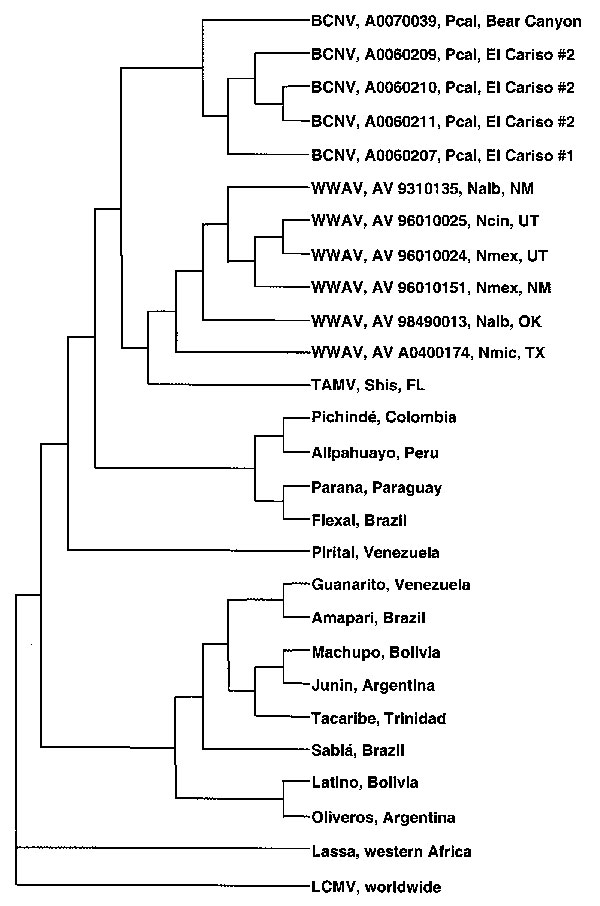Volume 8, Number 7—July 2002
Research
Bear Canyon Virus: An Arenavirus Naturally Associated with the California Mouse (Peromyscus californicus)
Figure

Figure. Phylogenetic relationships among Bear Canyon virus (BCNV) prototype strain A0070039, 4 other BCNV isolates from California mice (Peromyscus californicus), Whitewater Arroyo virus (WWAV), Tamiami virus (TAMV), and 15 other arenaviruses, based on a maximum likelihood analysis of a fragment of the nucleocapsid protein gene. The string of characters following “BCNV” or “WWAV” denotes the virus strain. LCMV, lymphocytic choriomeningitis; Pcal, Peromyscus californicus; Nalb, Neotoma albigula; Ncin, N. cinerea; Nmex, N. mexicana; Nmic, N. micropus; Shis, Sigmodon hispidus; NM, New Mexico; UT, Utah; OK, Oklahoma; TX, Texas; FL, Florida.
Page created: July 16, 2010
Page updated: July 16, 2010
Page reviewed: July 16, 2010
The conclusions, findings, and opinions expressed by authors contributing to this journal do not necessarily reflect the official position of the U.S. Department of Health and Human Services, the Public Health Service, the Centers for Disease Control and Prevention, or the authors' affiliated institutions. Use of trade names is for identification only and does not imply endorsement by any of the groups named above.